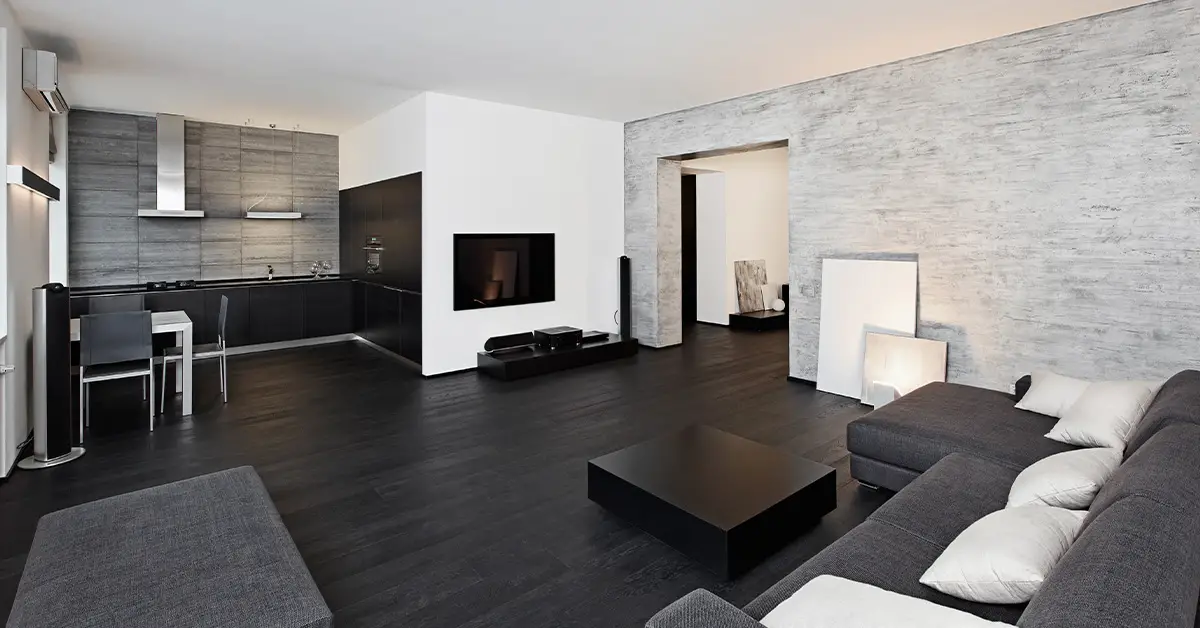Want a fresh look for your home without taking on a major home improvement project? Changing the window treatment can have a big impact on energy efficiency and the look and feel of a room.
There’s a wide variety of window treatments available. Blinds are functional, versatile, and can fit almost any window. So, it’s not surprising that blinds are the most popular window treatment today.
Custom blinds can be a big investment. But you have other options. Choosing standard size window blinds can save you money and time. Here’s what you need to know about this affordable, off-the-shelf choice.
Table of Contents
What Are Standard Size Window Blinds?
Standard size window blinds are designed to fit standard size windows. Designate dimensions for both blinds and windows as width by height (WxH). Most home improvement stores and home decor stores stock standard size window blinds to fit these windows:
- double-hung windows: 24″ – 48″ wide x 36″ – 72″ high
- picture windows (fixed glass windows): 24″ – 108″ wide x 24″ – 96″ tall
- sliding windows: 36″ – 84: wide x 24″ – 60″ high
- sliding glass doors: 60″ – 72″ wide x 80″ high
Even if your windows aren’t exactly the standard size, you may still be able to use standard size window blinds.
Determining the size blinds you need depends on three other considerations: window shape, type of blinds, and where they’re mounted (inside mount vs. outside mount).
Window Shape Effects Blind Size
Blinds will work on almost every standard window shape. There are a few exceptions. Round, hexagonal, and curved windows generally don’t accommodate fitted blinds very well. However, you can still hang them over odd-shaped windows using an outside mount.
Bay windows can often accommodate standard-size window blinds, especially windows separated by several inches of wall space. If the windows have very little space between them, it’s crucial to ensure there’s enough clearance for your blinds to open and close properly. Mini or micro blinds might be your best option if space is tight.
When purchasing blinds for French doors, consider the size and type of doorknob. Some wide-slat blinds don’t work with large or protruding knobs and levers, and they may affect the way the door opens.
Does Blind Type Affect Size?
Blinds come in two basic types: horizontal blinds and vertical blinds. Both offer the versatility of adjusting the slats to control light and privacy. Both can be opened fully and tucked out of sight. The difference between them is in the way the slats hang.
The slats on horizontal blinds hang parallel to the window sill. They are often connected by cloth strips or string (tapes). When you open blinds with horizontal slats, they raise to the top of the window.
Vertical blinds have vertical slats that hang the length of the window. The slats are generally not tied together. Vertical blinds open by sliding off to one side. Vertical blinds are a popular and practical option for sliding glass doors and floor-to-ceiling windows.
The type of blind you choose can affect how they’re mounted and determine what size you need.
Where You Mount Blinds Determines Size
There are two ways to install blinds. You can use an inside mount or an outside mount. There are aesthetic and functional differences between them. Each has advantages, depending on your window type and personal style.
Install inside mount blinds inside the window frame. This method is the more traditional and popular way to install blinds. Inside mount blinds take up less space than outside mount and offer a simple, clean look. Inside mount blinds are a good choice if you want to show off woodwork or layer window treatments.
Install outside mount blinds on the outside of the window frame or casement, usually above the window. Because outside mount blinds are larger than the window opening, you can use standard size window blinds, even on a non-standard size window. This method can make a small window appear larger, and it allows you to block out more light.
How to Measure for Blinds
Measuring your window accurately is important whether you plan to use ready-made blinds or made-to-measure blinds. For both inside mount and outside mount blinds, determining the dimensions is key to getting the right fit and the look you want.
Blind Type Affects Inside Mount Measurements
There are some differences in how you measure width and height for blinds mounted inside the window frame. The differences are based on blind type: vertical vs horizontal.
For horizontal blinds, you’ll take three measurements for each dimension. Round the measurements down to the nearest 1/8 inch.
Start by measuring the width of the window inside the window frame. Take one measurement at the top, one across the middle, and one just above the windowsill. Use the smallest of the three to ensure your blinds will have clearance.
For height, take three height measurements, one on the left side of the window, one on the right, and one in the middle. Measure inside the window frame from head to sill. Then, use the longest measurement so the blinds cover the entire opening.
For vertical blinds, determining size is done slightly differently for both width and height.
Measure the width inside the window frame at the top. This is the number you will use for width. Go ahead and measure at the middle and the bottom too. Compare the numbers. If there’s a great variance, you will probably need to mount blinds outside the frame.
Measure the height from top to bottom in three places—on the left side, the right side, and in the middle, just as you would for horizontal blinds. For vertical blinds, use the shortest measurement to ensure the blinds fit inside the window casement.
Measuring for Outside Mount
Using an outside mount gives you more flexibility in blind size. The rule of thumb for outside mounted blinds is to measure width and height to the nearest 1/8 inch, rounding up. Just like with an inside mount, you’ll take three measurements for each dimension.
For width, measure your window trim from edge to edge. If your window has no trim, measure the outside of the window casement. Take three measurements at the top, in the middle, and at the bottom. Then add at least three inches to the widest measurement. That will provide good light control and privacy.
To measure height, first determine how far above the window trim or casement you want the blinds to be and mark it on the left, middle, and right sides. It will need to be at least two inches above your trim to accommodate the mounting hardware. But it can be higher if you want the window to appear taller.
How you measure the height will depend on whether or not you have a protruding windowsill. With a protruding sill, measure from each top mark to the windowsill. Use the shortest measurement.
If there’s no protruding sill, measure from the top marks to a point two to three inches below the windowsill. Again, measure along each side and in the middle. Use the longest measurement.
Updating with Blinds
Whether your goal is to update your home’s style or improve energy efficiency, installing a new window treatment is a simple and effective home improvement. Blinds can be an effective option.
Standard size window blinds offer the style and function you’re looking for at an affordable price. Plus, since they’re ready-made, they can usually be installed more quickly than custom-made window treatments of any kind. That makes blinds an excellent option for any home.
Find more home and room style tips on the Room Impact blog.







